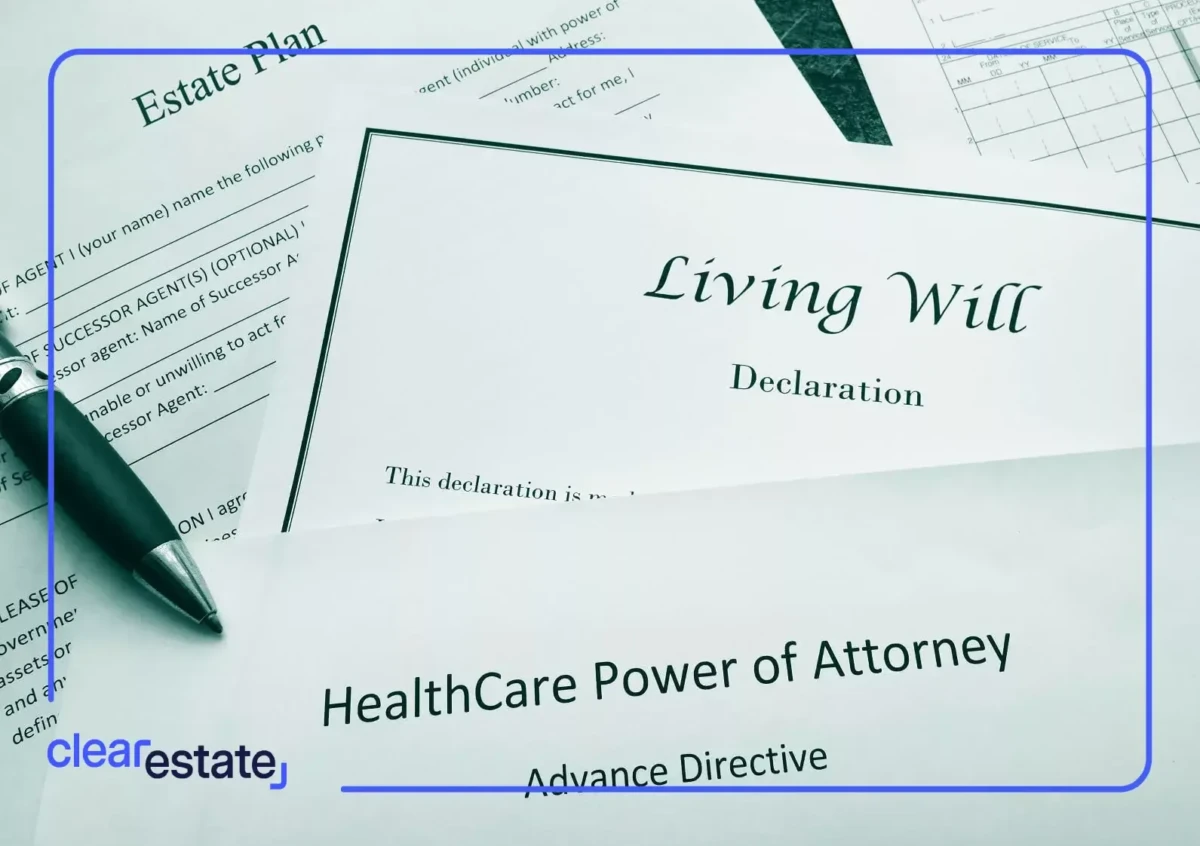Estate Settlement
Dec 04, 2024
How Do Executors Mail Inheritance Checks?
Find out how inheritance checks are mailed, including security measures and what to do if there are delays in receiving them.
Facing a loss? Use our 10-step guide to take charge of next steps—from documentation to funeral planning—without missing anything important


The death of someone close to you is a traumatic experience. It can feel like your world has suddenly stopped, and everything is centered around your grief and your loved ones. However, the reality is that the world unfortunately keeps moving.
The death of a loved one leaves many loose threads, and they need to be tied up. Some of these need to be tied up very quickly, and if that task falls to you, then you may find yourself surprised by the amount of paperwork you’ll need to submit. Bureaucracy doesn’t stop just because someone died; in fact, it often increases.
This is an overwhelming time, and having a clear roadmap for how to proceed can take some of the burden off your shoulders. Here are the 10 things you’ll need to handle immediately after the death of a loved one.
Obtaining the legal pronouncement of death is usually the first step you’ll need to undertake and will be necessary for every other step going forward. If your loved one died in a hospital, a nursing home, or in hospice care, then the doctor or nurse who was present will usually be in charge of issuing the pronouncement.
If your loved one died outside of medical care, such as at home, then obtaining a legal pronouncement may be more hands-on. You have several options. For one, you can call 911 and have paramedics give the pronouncement. Or, you can call your loved one’s family doctor for advice or a declaration of death. Another option is to call a local medical examiner or the health department’s office for a staff member to come and assist you.
You will need this legal pronouncement in order to start making funeral arrangements and begin the process of settling their estate.
While a legal pronouncement of death and a formal death certificate are similar, they are not identical. A legal pronouncement of death is a confirmation of someone’s death by a medical professional—either a doctor or a nurse, depending on the state. In contrast, a death certificate is a formal, written legal proof that someone is no longer alive.
Keep in mind that you’ll need multiple copies of the death certificate to transfer ownership of assets, close accounts, and notify insurance companies, just to name a few tasks. So as soon as you have the official death certificate, you should begin making enough copies for the weeks ahead.
Now is also the time to look for records confirming whether the deceased wished to be an organ or tissue donor after their death, since doctors need to act fast if that’s the case.
A quick way to tell if a loved one was an organ donor is by looking at their driver’s license or state ID card. If they are a registered donor, they likely have a donor sticker on the bottom corner of their ID. But, that isn’t always the case. If your loved one didn’t make their organ donation wishes clear, check with the attending physician as soon as possible—they will be able to look up their organ donor records.
Let doctors or hospital staff know if you’re aware of your loved one’s wishes, or look for records indicating that they wished to donate organs or tissue after they’ve passed.
Did you know? As of 2024, there are over 170 million people who are registered organ, eye and tissue donors according to the organization Donate Life America. Over 2.5 million lifesaving and healing tissue transplants are completed each year.
Reach out to everyone who was close to the deceased—family, friends, neighbours, and anyone who you think would want to know. Make phone calls, send emails, text messages, or whatever else you need to do in order to reach them. You might be dreading this step, but the likelihood is that you’ll feel less alone and more supported as you reach out. Choosing to notify close friends and family first after there’s been a death to someone close to you means you can lean on each other during this time of grieving, and gather support for the weeks and months ahead.
If the death was somewhat expected—in cases where the deceased was in hospice or battling an illness for an extended period of time, for example—then there’s a high chance that they left behind instructions for their funeral. These instructions were either communicated to you or left behind in the form of a written statement. Did they want to be buried or cremated? Was there a specific funeral home with which they’ve already made plans? Did they want a religious service? Did they want someone to choose pall bearers or did they have individuals in mind?
Now is the time to gather the family and discuss your loved one’s funeral wishes, and collect the funds that will be required for funeral proceedings.
Pet care is often overlooked when someone passes away, but it’s an important responsibility—many people leave behind beloved animals who need immediate care.
If your loved one had pets, now is the time to ensure they’re safe and looked after. In some cases, the deceased may have included instructions for pet care in their will or estate plan, naming a pet guardian or setting aside funds.
Hopefully, your loved one has discussed where important documents such as their will and/or living trust are kept with you and your family. Once your loved one passes, it’s important to locate them as quickly as possible in order to get confirmation about their wishes regarding their funeral and any other important business that needs to be addressed immediately after death. If you have the will you can also submit it quickly to the probate court and jump-start the process of settling your loved one’s estate.
Finding other estate planning documents, such as a living trust, is also crucial. A living trust is a legal arrangement created by the grantor for a trustee to distribute their assets upon death, and in some cases, help the deceased’s estate avoid the probate process. It’s important to find a copy of the trust to have a clear picture of the deceased’s full estate plan before beginning the estate settlement process.
If a loved one passed away without a will in place, whether professionally prepared or otherwise, they are considered intestate. This means the laws of the state they were a resident of will determine how their assets are distributed. To do this, the probate courts will appoint an executor to handle the estate’s assets, pay off debts and file final taxes for the deceased and/or the estate.
This is why creating a will is so important—it ensures your assets are distributed according to your wishes, without leaving those decisions up to government rules.
Once it’s clear what wishes your loved one had for their funeral, it’s time to make arrangements. If a funeral plan with a specific funeral home already exists, then this step is fairly easy. If no specific plan is in place yet, you’ll choose a funeral home and then—based upon your loved one’s wishes—choose a tombstone or urn, whether to bury or cremate, where the body or the ashes will be laid to rest, and where the memorial service will be held. You’ll also need to plan specifics like who will hold the eulogy, who will be invited to the memorial, and what the itinerary of the memorial should look like.
Before the will is officially validated and the estate settlement begins, it is important to secure the deceased person’s home, valuables, and belongings, such as their vehicles. Make sure valuables are locked up, and keep the keys with yourself or someone you trust. This helps protect everything until probate starts.
If you are, or will likely be, the executor, you have a fiduciary duty to take care of the estate’s assets. You must keep them safe and in good condition. If the assets lose value or get damaged because of poor care, you could be held financially responsible or face legal action from beneficiaries or creditors.
It’s important to notify the deceased’s employer soon after their passing so that payroll and any other work-related matters can be addressed. While notifying their employer, make sure to ask about any death benefits and how the deceased’s pension or other retirement fund will be handled, if applicable.
In addition to updating their employer on their death, make sure to also let these other entities know about their passing:
Social Security Administration
IRS
State social benefits office
Local election office (to cancel voter registration)
Department of Veterans Affairs (if applicable)
Defense Finance and Accounting Service (if they were a military retiree)
Office of Personnel Management (applicable for federal employees)
Credit agencies
Financial institutions
Insurance agencies (for life insurance)
In addition to sending notices to the above entities as a general rule, many states require their own specific notices to be sent out as well.
Keep in mind that most of these agencies will require the deceased’s Social Security number and a certified copy of the death certificate to update their records
Handling your loved one’s affairs involves many responsibilities, and these tasks should be your immediate priority—they typically need to be addressed promptly.
After completing these initial steps, you may face the challenging and time-consuming probate process. Probate can often take several months, or even years, to complete. That’s why having a professional by your side is essential.
Our experienced estate administration team has managed thousands of both simple and complex estate settlements, and we are ready to assist you as well. Get in touch with a ClearEstate team member today to get the help you need—during a time you need it most.
 Simplify Probate Today
Simplify Probate Today
Get expert guidance from our probate specialists who've helped 10,000+ families.
Book a free consultation today